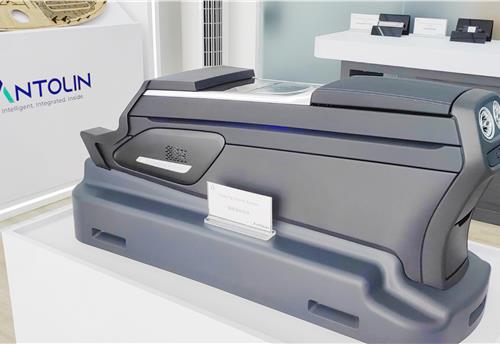Lanxess expands metal-plastic hybrid technology for hollow profiles
The German specialty chemicals company brings the lightweighting technology to cross-car beams and also sees future scope in seat structures, tail-gates, front-ends and mirror brackets in trucks.
Lightweighting is an inevitable requirement of the automotive industry as vehicle manufacturers thrive to enhance fuel efficiencies of their products, with an ever engrossing net of regulations and the growing need to move towards a cleaner tomorrow.
While processes of the likes of additive manufacturing and use of materials like plastics, ABS and carbon fibre are some of the solutions ahead of OEs, the cost –value ratio has still kept most of these technologies at bay from proliferating into mass-market products in the automobile space.
Lanxess, a German speciality chemicals company, which works in the areas of development, manufacturing and marketing of chemical intermediates, additives and plastics, is making good progress in the area of plastic-metal hybrid technology, which aids to lightweight fundamental structures, as well as enhance their stiffness.
The technology, developed by Lanxess, systematically combines the advantages of metal and plastic and has been in use for some years to manufacture automotive parts including front ends, pedal boxes and brake pedals. This hybrid technology includes glass fibre reinforced polyamide-6 for injection moulding, as well as a steel or aluminium sheet as the metal component. Lanxess has now extended the use of its hybrid technology to metallic hollow profiles with round or rectangular cross-sections.
According to Lukas Schröer, project manager, Lightweight Structures, High-Performance Materials (HPM) Business Unit, Lanxess, “Compared to sheet metal, hollow profiles show significantly higher dimensional stability along with increased torsional strength and stiffness. We believe that this new ‘Hollow Profile Hybrid Technology’ enables manufacturing of components such as cross-car beams, which, until now, were not resilient enough using classic plastic-metal hybrid technology.”
In addition to cross-car beams, this new hybrid technology offers significant potential for application in other structural components with high mechanical demands. “With respect to lightweight automotive components, we’re thinking about seat structures, front ends, tailgates, and mirror brackets in trucks. But, we also see the potential for this technology outside of the automotive space in the manufacturing of furniture, ladders, and strollers as well”, says Schröer.
Simple and affordable manufacturing process
Lanxess has developed an economical, one-step process for the hollow profile hybrid technology that has to meet multiple challenges. According to Boris Koch, hybrid technology specialist, HPM Business Unit, Technical Application Development, Lanxess, “It needs to be possible to smoothly and fully automatically place the metal inserts into the injection moulding tool. Due to the production process, these metal-inserts exhibit dimensional tolerances, which can damage the tool. In case of undersized inserts, there could be the possibility of leaks arising in the tool system.”
Additionally, in order to avoid the profile to collapse due to the high levels of melt pressure during the injection moulding process, the metal-insert also needs to be supported. Another challenge for the company was to create a long-lasting, form-fitting bond between the plastic and the metal in all directions. “The result of our development work is a process that is suitable for large-scale production, only requiring an investment in standard injection moulds and machines. It cuts down cycle times just like the standard injection moulding process, and is just as simple as the classic hybrid technology using metal sheets”, Koch added.
Use of die-cast and extrusion moulding inserts
The company is currently working on expanding the hybrid technology to simple and competitive die-cast or extrusion moulding inserts. “Even hollow profile inserts made of fibre-reinforced composite can be used in the new hybrid technology. This allows manufacturers to achieve further weight reductions in the mass production of structural components”, says Koch.
Headquartered in Cologne, in Germany, Lanxess closed FY2016 with sales of Euro 7.7 billion and the company is represented in 25 countries globally, with employee strength of over 19,000 associates. The company is also one of the largest suppliers of synthetic rubber under Arlanxeo, its JV with oil giant Saudi Aramco.
RELATED ARTICLES
Antolin unveils sustainable tech solutions at Beijing Motor Show
In line with its China market roadmap, Antolin is showcasing its latest advances in lighting, HMI, electronics, and sust...
Visteon wins $1.4 billion in new business in Q1 2024, launches 26 new products
Digitisation of vehicle cockpit megatrend is a key growth driver for Visteon with over $400 million of displays wins; Vi...
BMW uses Catena-X ecosystem using real-world CO2 data to enhance quality
Working together with partners and suppliers, the company has modelled a complete data chain for the first time using re...





 By Autocar Pro News Desk
By Autocar Pro News Desk
 29 Mar 2018
29 Mar 2018
 4504 Views
4504 Views









